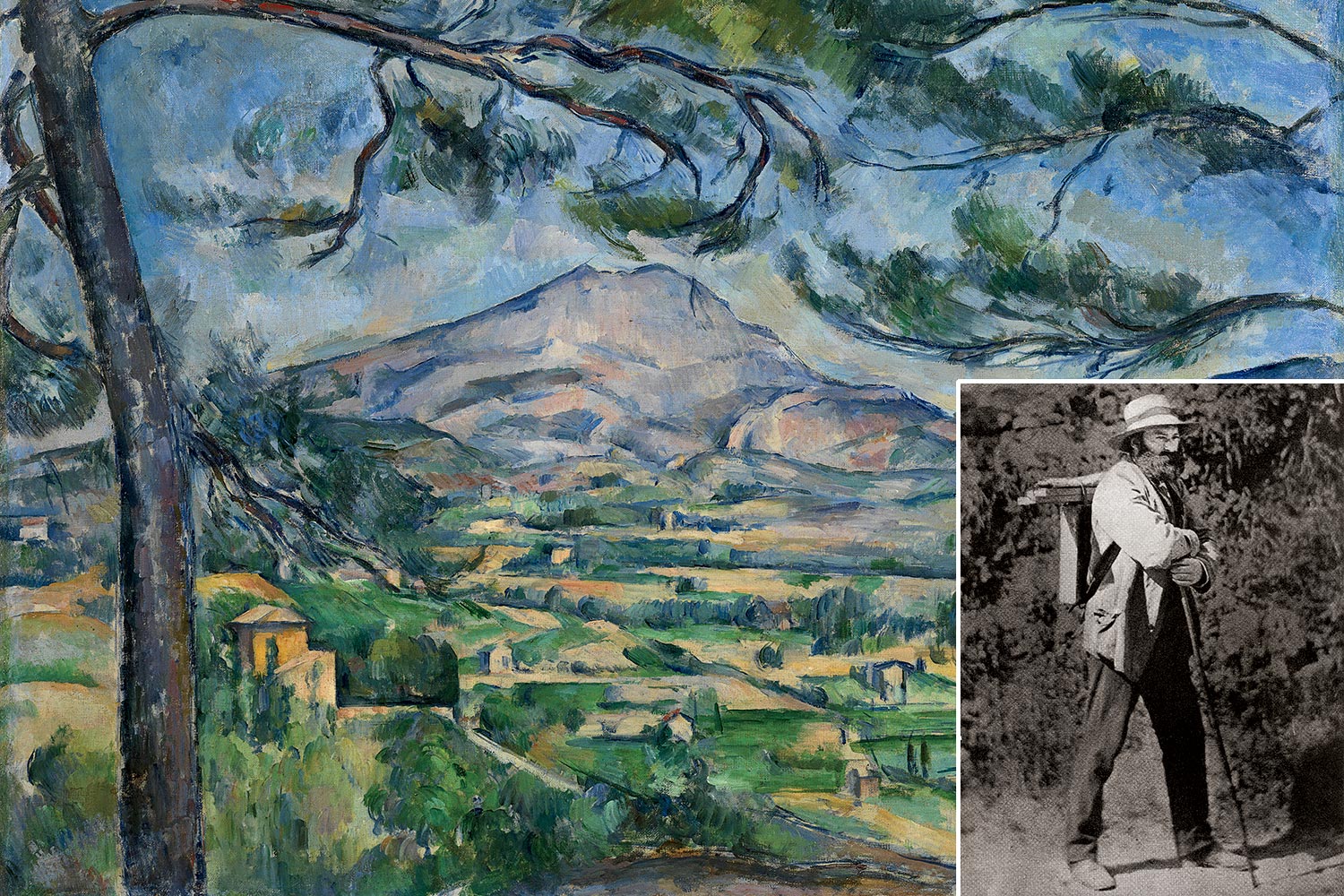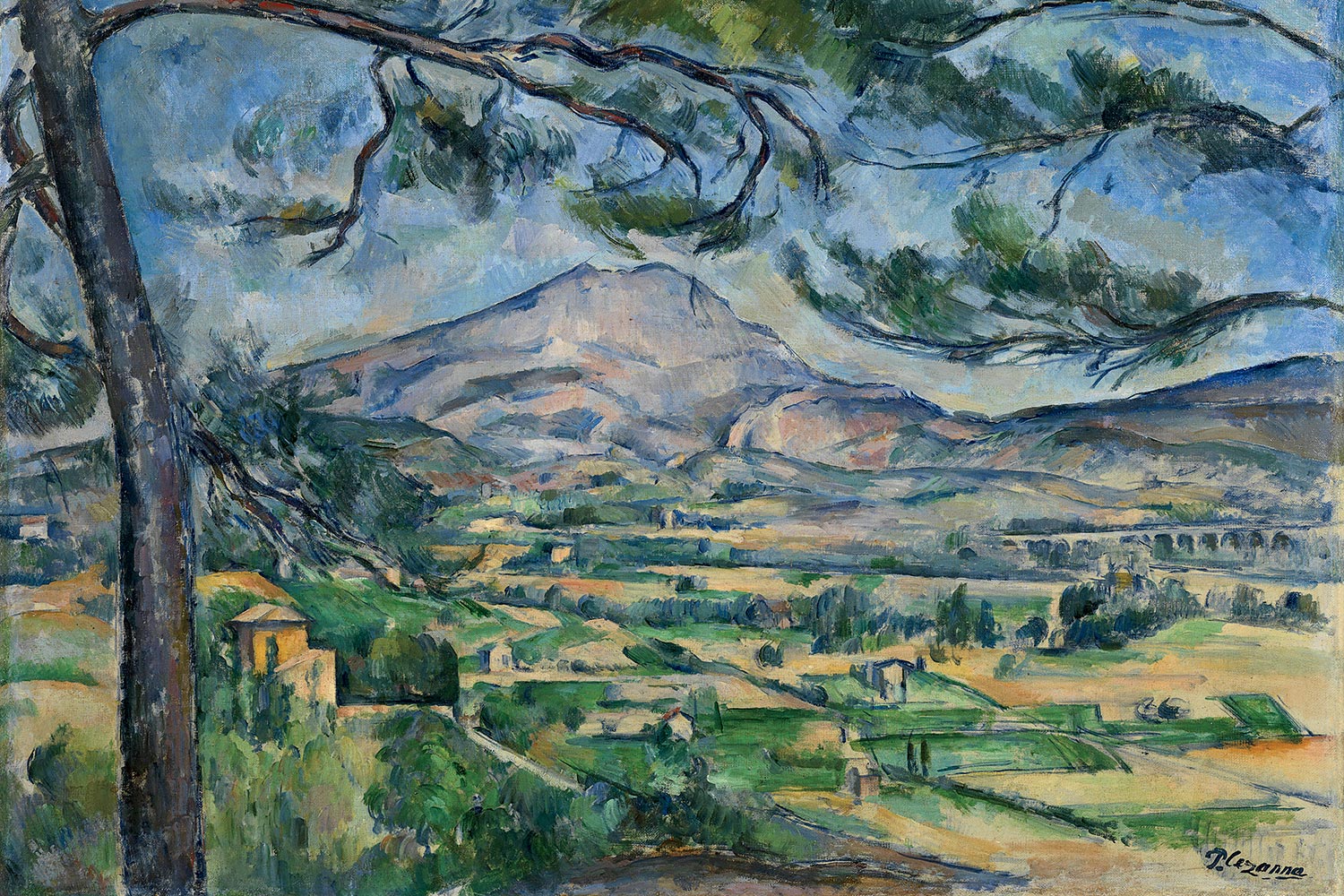The work of the French painter Paul Cezanne has long fascinated his fellow artists. That’s a key takeaway from a new exhibition at the Art Institute of Chicago that frames Cezanne as a bridge from impressionists to later generations of painters like Picasso and Matisse, who were among the previous owners of many of the works on display.
The first major Cezanne retrospective at the museum in more than 70 years and anywhere in the United States in 25, the exhibition is curated by Gloria Groom, a specialist in 19th-century European painting, and Caitlin Haskell, who focuses on modern and contemporary art. The cross-departmental collaboration is unusual for the Art Institute. “But we really feel that he doesn’t fit comfortably into the impressionists’ circle, and he is so important for the 20th and 21st centuries,” says Groom. “If there’s any one painter who helps you understand what modernism is in the 19th and the 20th centuries, Cezanne can do that,” Haskell adds.
We asked the curators to talk about four of their favorites from the 125-piece show, which opens May 15 and runs through September 5.
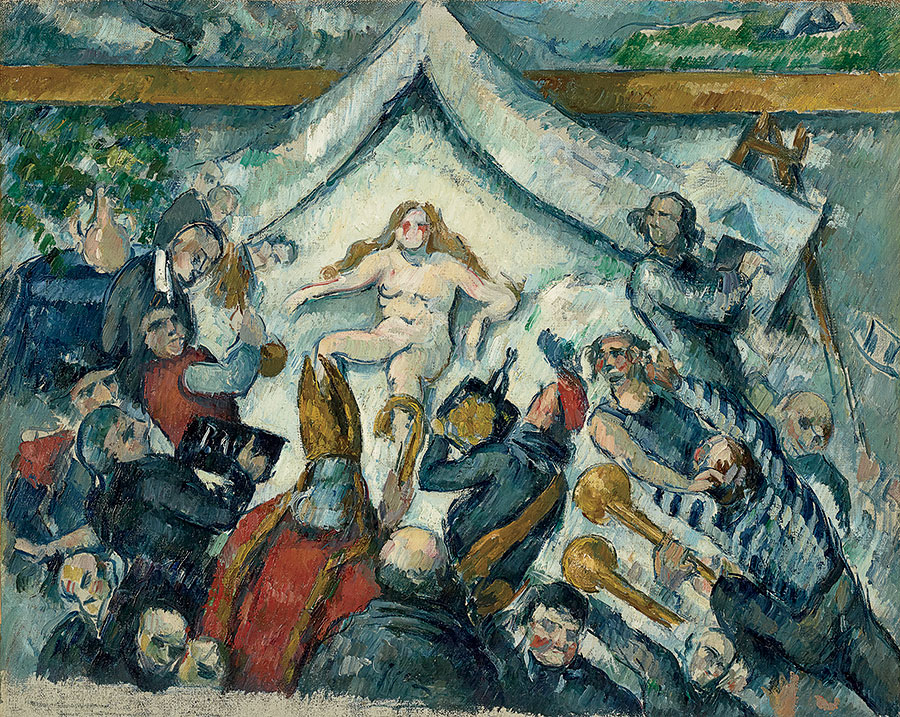
1. The Eternal Feminine
About 1877

Groom: “At this time he’s already had his second exhibition with the impressionists. You’re seeing these directional strokes that he’s using in his landscapes, but now he’s applying it to a painting that’s purely his imagination. The subject matter is so ambiguous and odd, but you’re seeing that he’s making a nod to plein air painting, to the tradition of the nude, and to baroque painting. He’s combining all these into this rather small canvas, and it’s already showing the germs of where he’s evolving.”
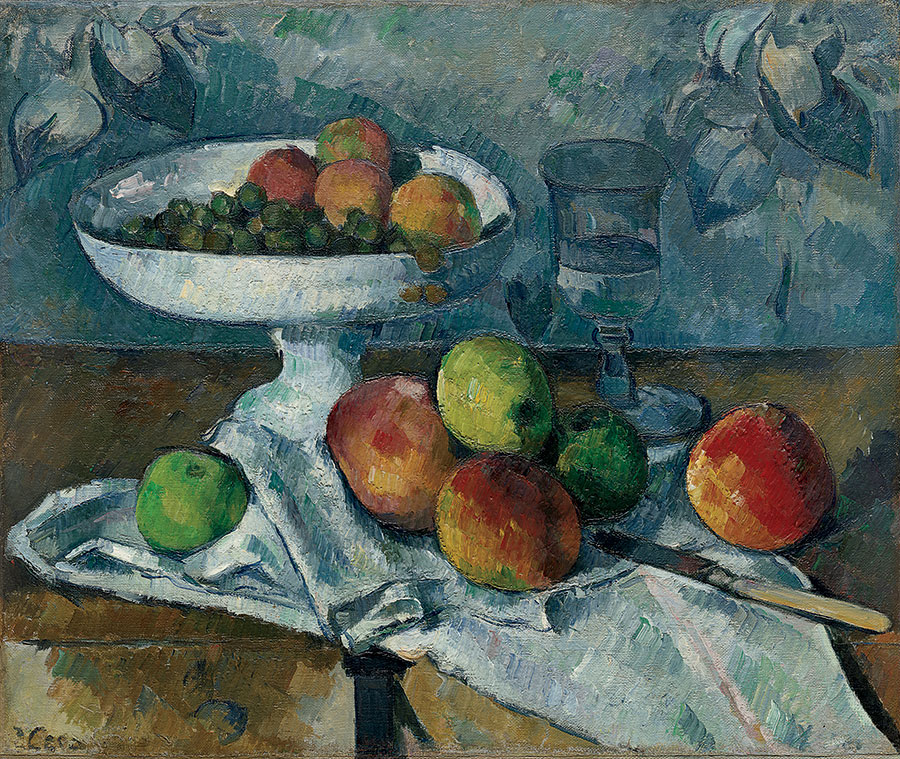
2. Still Life with Fruit Dish
1879–80

Haskell: “There’s this very insistent materiality of the brushstroke. If prior painters were interested in achieving a surface that was smooth and regular and finished, Cezanne absolutely isn’t doing that at all. Motifs in the wallpaper jump forward and seem to be in the same plane as the fruit on the table. The first owner of this painting was Paul Gauguin, and in the Art Institute’s collection we have a painting by Gauguin where he includes the Cezanne painting in the background. So you really have a sense of artistic lineages taking place before your eyes.”
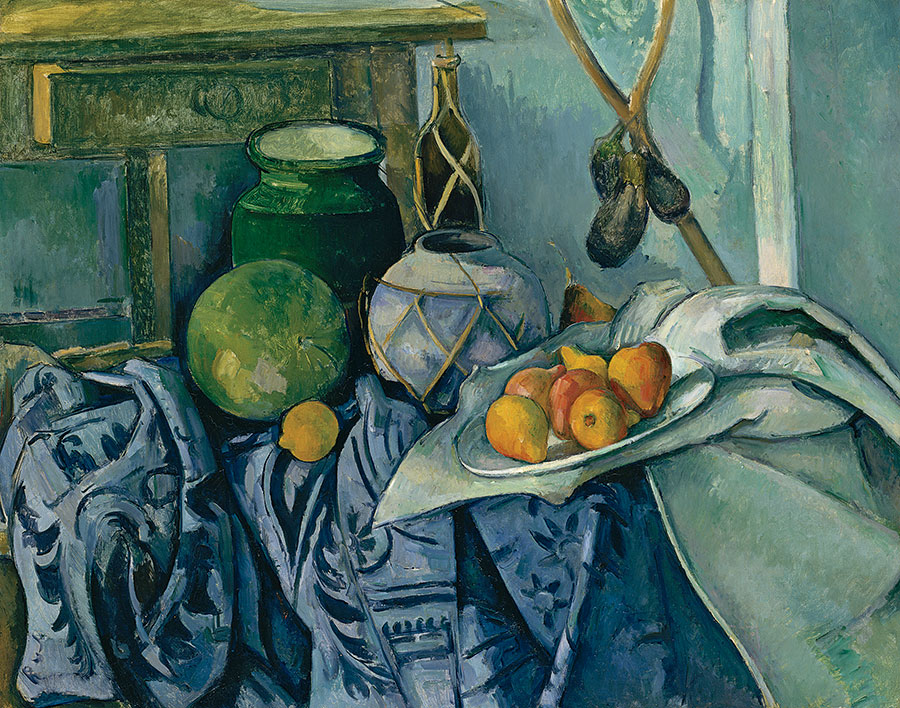
3. Still Life with a Ginger Jar and Eggplants
1893–94

Groom: “We’re further on in his career, where he’s using this patterned tablecloth as something almost topographical — it has dynamism of its own. We have six of these blue tablecloth paintings in the exhibition. He’s letting his paint and what he’s feeling lead to the next strokes. Nothing is truly balanced, and yet there is this sense of complete control. It requires slow looking, because when you start looking at how the background of this table and the wallpaper pushes forward and just everything going on in this , it’s mesmerizing—and it’s exactly what mesmerized the artists of this time and later too.”
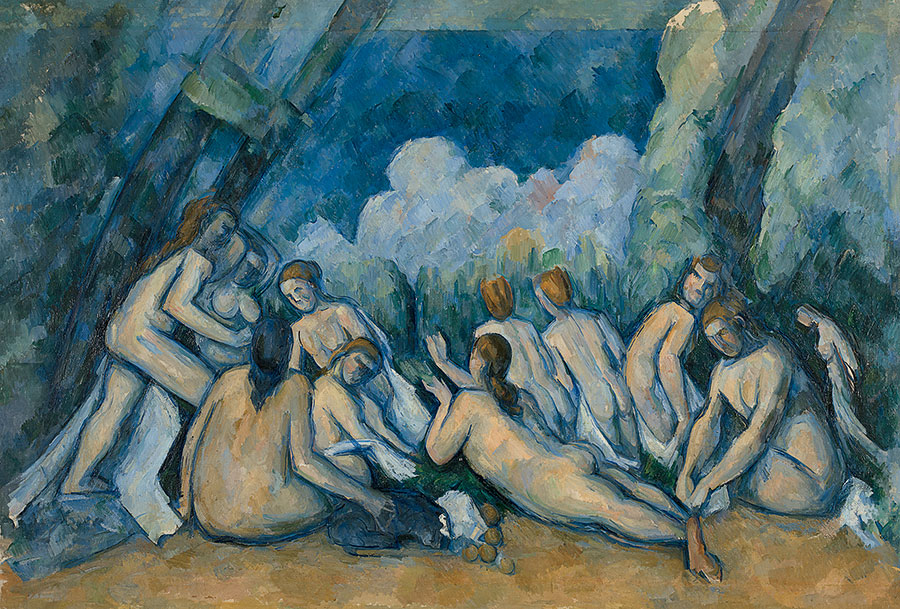
4. Bathers (Les Grandes Baigneuses)
About 1894–1905

Haskell: “The culminating painting of the exhibition will be this version of The Grand Bathers from the National Gallery in London. This is one of the paintings we know that fauvists, cubists, artists interested in expressionism saw in the 1907 Cezanne memorial exhibition in Paris. That moment is a revelation, because Cezanne has been working in the South of France, people haven’t been seeing him develop. And it’s like all of a sudden you have a full body of work presented. It’s just this amazing aha moment that leads to several different styles of avant-garde painting.”



